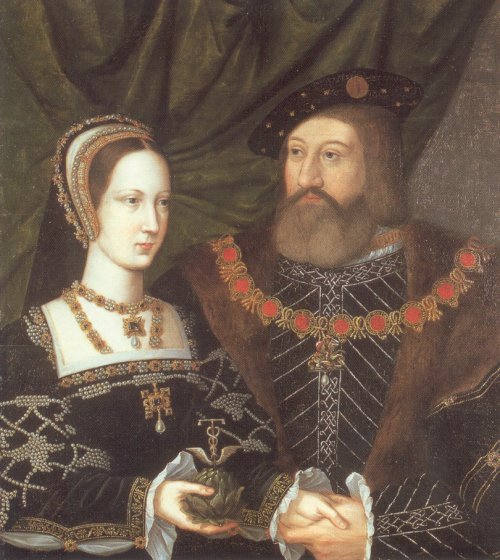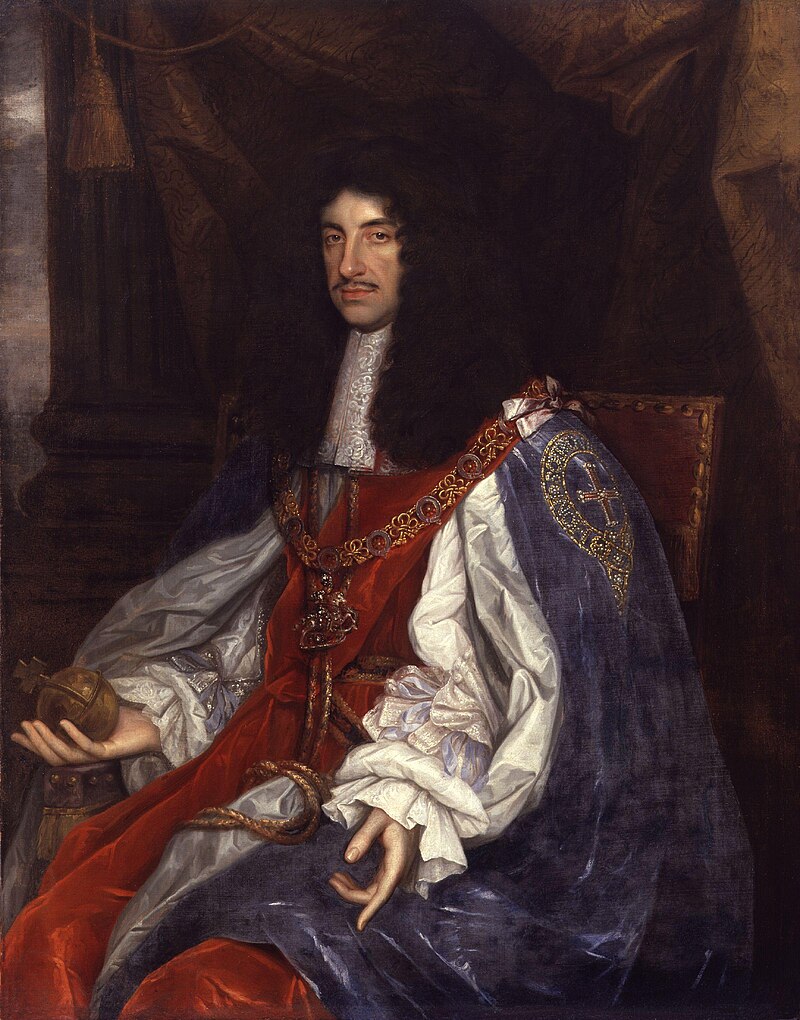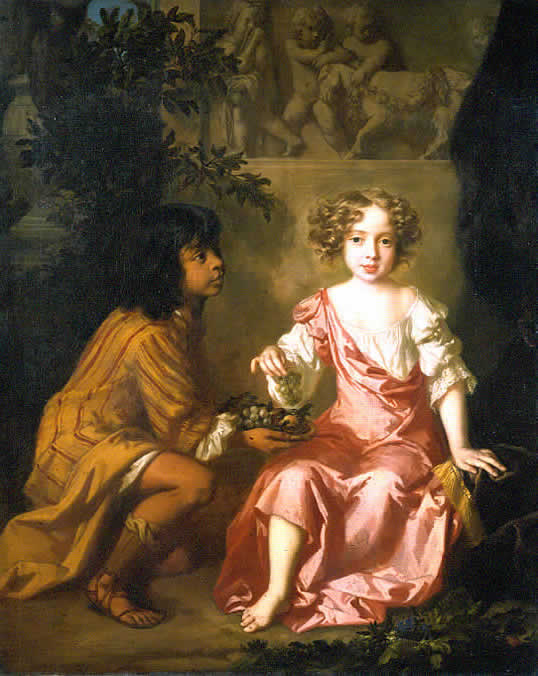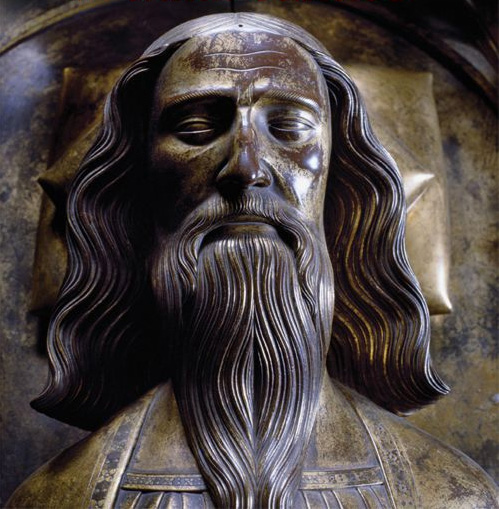© Unofficial Royalty 2024

Mary Tudor and her husband Charles Brandon, Duke of Suffolk; Credit – Wikipedia
June 25, 1242 – Birth of Beatrice of England, Countess of Richmond, daughter of King Henry III of England, in Bordeaux, Duchy of Aquitaine, now in France
In 1260, Beatrice married John of Dreux, the eldest son of John I, Duke of Brittany. In 1268, King Henry III granted the title Earl of Richmond to John I, Duke of Brittany as an enticement when tensions rose with France. However, John I soon transferred the title of Earl of Richmond to his son and heir John of Dreux, who also became John II, Duke of Brittany upon his father’s death in 1286. John of Dreux became Duke of Brittany after the death of Beatrice so she never became the Duchess of Brittany. Beatrice died on March 24, 1275, aged 32, in London, England while visiting her brother King Edward I of England. Possibly she died due to childbirth complications as her youngest child Eleanor was born in London in 1275.
Unofficial Royalty: Beatrice of England, Countess of Richmond
June 25, 1533 – Death of Mary Tudor, daughter of King Henry VII of England and Elizabeth of York, sister of King Henry VIII of England, and wife of Charles Brandon, Duke of Suffolk, at Westhorpe Hall in Suffolk, England; originally buried in the Abbey at Bury St. Edmunds, reburied at St. Mary’s Church in Bury St. Edmunds, England
From Susan: Several years ago, after some questions arose about Mary’s reburial, I emailed St. Mary’s Church in Bury St. Edmunds and got this response: “In reply to your query, yes, Mary Tudor daughter of Henry VII and sister of Henry VIII was originally buried in the Abbey at Bury St. Edmunds. Her coffin was brought here at the Dissolution of the Monasteries and is now in the crypt. The original grave slab survives and is in the sanctuary near the altar, there is also a later inscription and insignia on the wall and a marble kerb given by Edward VII. In the Lady Chapel there is a stained glass window given by Queen Victoria which depicts Mary’ life. St. Mary’s church was part of the Abbey complex and is still the town church; it occupies a corner of the Great Churchyard and so is close to the Abbey ruins.”
Unofficial Royalty: Mary Tudor, Queen of France, Duchess of Suffolk
June 25, 1755 – Birth of Grand Duchess Natalia Alexeievna, Tsarevna of Russia, born Wilhelmina Louisa of Hesse-Darmstadt, first wife of the future Paul I, Emperor of All Russia in Prenzlau, Kingdom of Prussia, now in Brandenburg, Germany
Name after marriage: Natalia Alexeievna
In 1772, Catherine II (the Great), Empress of All Russia was searching for a bride for her 18-year-old son and heir Grand Duke Paul Petrovich (the future Paul I, Emperor of All Russia). Catherine the Great asked Friedrich II of Prussia for recommendations and his thoughts immediately turned to the three unmarried daughters of Karoline, Landgravine of Hesse-Darmstadt: Amalie, Wilhelmine, and Luise. Empress Catherine invited Landgravine Karoline and her three daughters to St. Petersburg. It did not take Paul long to make his choice. Paul was charmed by Wilhelmine. Wilhelmine converted to Russian Orthodoxy on August 15, 1773, taking the name Natalia Alexeievna. Sadly, three years later, 20-year-old Natalia died after six days of agonizing labor along with her child, a son.
Unofficial Royalty: Wilhelmine Luise of Hesse-Darmstadt, Grand Duchess Natalia Alexeievna, Tsarevna of Russia
June 25, 1864 – Death of King Wilhelm I of Württemberg at Schloss Rosenstein in Stuttgart, Kingdom of Württemberg, now in Baden-Württemberg, Germany; buried at the Württemberg Mausoleum in Stuttgart
Wilhelm became King of Württemberg upon his father’s death in 1816. He came to the throne during a difficult time in Württemberg. 1816 was known as the Year Without A Summer and the very cold temperatures resulted in food shortages. However, Wilhelm and his wife Ekaterina Pavlovna of Russia are credited with making great strides to alleviate the suffering by establishing policies and reforms that helped the people of Württemberg, regardless of social class. The king arranged for food and livestock to be imported, and established an Agricultural Academy to help promote the growth of crops and better general nutrition amongst his people. The Queen established numerous charities to help the poor and was behind the establishment of the Württemberg State Savings Bank.
Unofficial Royalty: King Wilhelm I of Württemberg
June 25, 1884 – Birth of Empress Teimei of Japan, wife of Emperor Taishō, born Lady Sadako Kujō in Tokyo, Japan
The future Emperor Taishō, had cerebral meningitis when he was three weeks old and this affected his health and his mental capacity, including a speech disorder and difficulty walking, for the rest of his life. Due to his health issues, he was often unable to continue his studies, and he was a poor student in areas requiring higher-level thinking. Because of Yoshihito’s diminished mental capacity, his father Emperor Meiji wanted an intelligent, articulate, and dignified wife for his son, and he found those qualities in Lady Sadako Kujō.
Unofficial Royalty: Empress Teimei of Japan
June 25, 1900 – Birth of Louis Mountbatten, 1st Earl Mountbatten of Burma, son of Prince Ludwig (Louis) of Battenberg (later 1st Marquess of Milford Haven) and Princess Victoria of Hesse and by Rhine and uncle of Prince Philip, Duke of Edinburgh, at Frogmore House in Windsor, England
Birth name: Prince Louis Francis Albert Victor Nicholas of Battenberg
Born Prince Louis of Battenberg at Frogmore House in Windsor, England, he was the youngest child of Prince Louis (Ludwig) of Battenberg and Princess Victoria of Hesse and by Rhine, a granddaughter of Queen Victoria. Almost from birth, he was known as Dickie. His mother’s younger sister was Empress Alexandra Feodorovna of Russia, and in his childhood, Dickie was close to her children. At a very young age, he began a “lifelong love affair” with one of them – Grand Duchess Maria Nikolaevna – and kept a framed photo of her by his bed for his entire life.
Unofficial Royalty: Louis Mountbatten, 1st Earl Mountbatten of Burma
June 25, 1911 – Death of Maria Clotilde of Savoy, Princess Napoleon, daughter of King Vittorio Emanuele II of Italy, at the Castle of Moncalieri in Montcalieri, Italy; buried at the Basilica of Superga in Turin, Italy
Maria Clotilde married Napoléon-Jérôme Bonaparte, son of Jérôme Bonaparte, the brother of Emperor Napoleon I, and Princess Catherine of Württemberg. Maria Clotilde was fifteen and Napoléon-Jérôme was 37. Maria Clotilde was not impressed by her portly, anti-clerical liberal fiancé. Her innocence, piety, and sense of duty clashed with Napoléon-Jérôme’s love of wine, women, and food. Several years after the fall of the Second French Empire in 1870, Maria Clotilde and her husband quietly separated and she returned to Turin, Italy with her daughter. Maria Clotilde continued her life of devotion and charity after her return to Italy. She spent her final years at the traditional summer residence of the Savoy family, the Castle of Moncalieri in Montcalieri, a town located just outside of Turin.
Unofficial Royalty: Maria Clotilde of Savoy, Princess Napoleon
June 25, 1914 – Death of Georg II, Duke of Saxe-Meiningen at Bad Wildungen, Principality of Waldeck, now in Hesse, Germany; buried in the Park Cemetery in Meiningen, Duchy of Saxe-Meiningen, now in Thuringia, Germany
Georg, passionate about the theatre, established the Meiningen Theater in the late 1860s and early 1870s, with the help of his third wife Ellen Franz, a former actress. The company toured extensively throughout Germany and Europe from 1874-1890 and became renowned for its attention to detail and authenticity in its sets and costumes and the portrayals of the characters. Georg drew upon his extensive knowledge of history and art, and designed many of the costumes and scenery, and choreographed many of the large crowd scenes within the productions. Having been interested in theatre since his youth, he was able to spend much of his time, effort, and money to create theatre productions that conveyed both lifelike reality and historical accuracy.
Unofficial Royalty: Georg II, Duke of Saxe-Meiningen
June 25, 1937 – Birth of Nawaf Al-Ahmad Al-Jaber Al-Sabah, Emir of Kuwait in Kuwait City, Kuwait
Upon the death of his half-brother Sabah IV Al-Ahmad Al-Sabah, Emir of Kuwait on September 29, 2020, 83-year-old Crown Prince Nawaf Al-Ahmad Al-Sabah was been named by the Kuwaiti Council of Ministers as his successor. During a special session of the National Assembly on September 30, 2020, Nawaf Al-Ahmad Al-Jaber Al-Sabah, 16th Ruler and 6th Emir of Kuwait, took the constitutional oath as Emir of Kuwait. Nawaf Al Ahmad Al Sabah, Emir of Kuwait died on December 16, 2023, aged 86. Nawaf’s half-brother Crown Prince Mishal Al-Ahmad Al-Jaber Al-Sabah, succeeded as Emir of Kuwait.
Unofficial Royalty: Sheikh Nawaf Al-Ahmad Al-Jaber Al-Sabah, Emir of Kuwait
This article is the intellectual property of Unofficial Royalty and is NOT TO BE COPIED, EDITED, OR POSTED IN ANY FORM ON ANOTHER WEBSITE under any circumstances. It is permissible to use a link that directs to Unofficial Royalty.



















